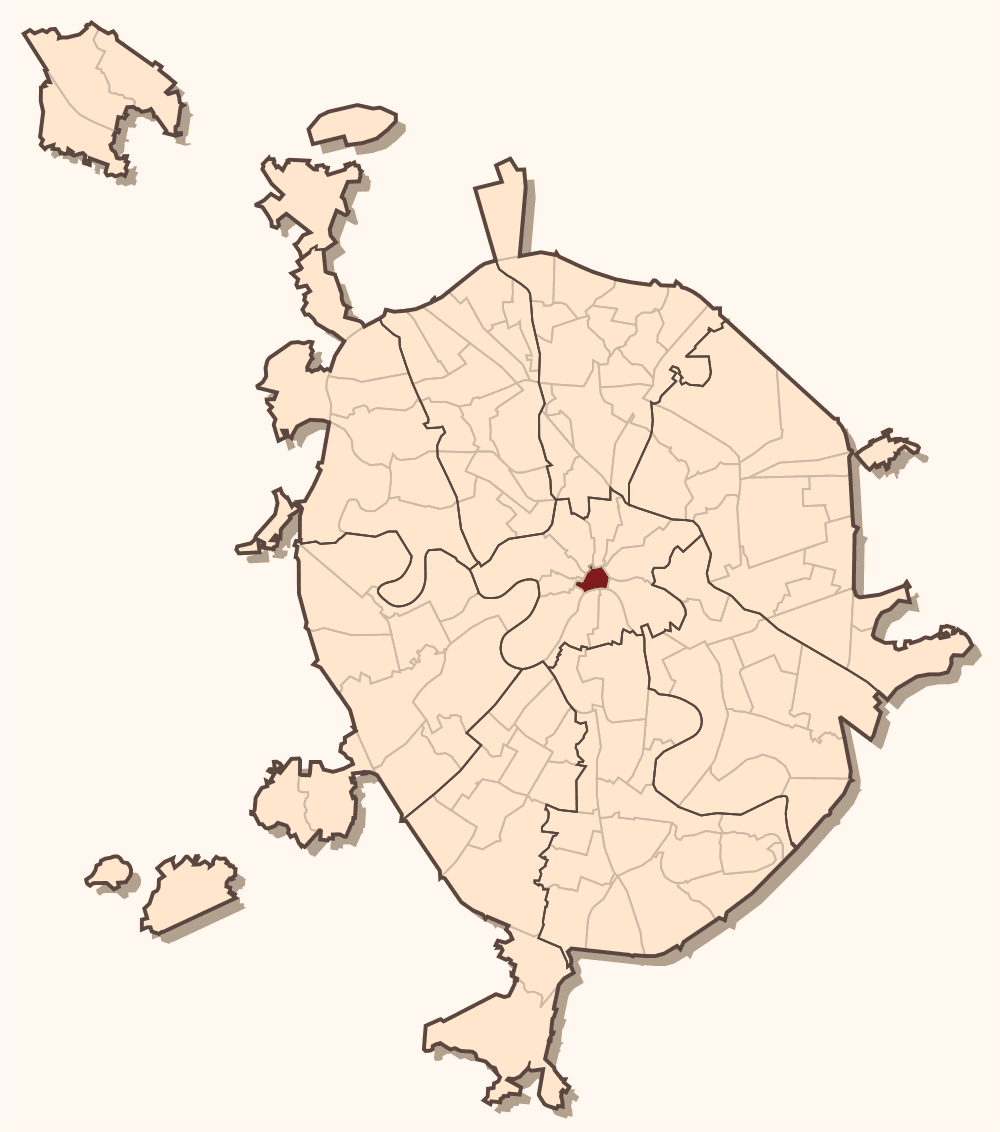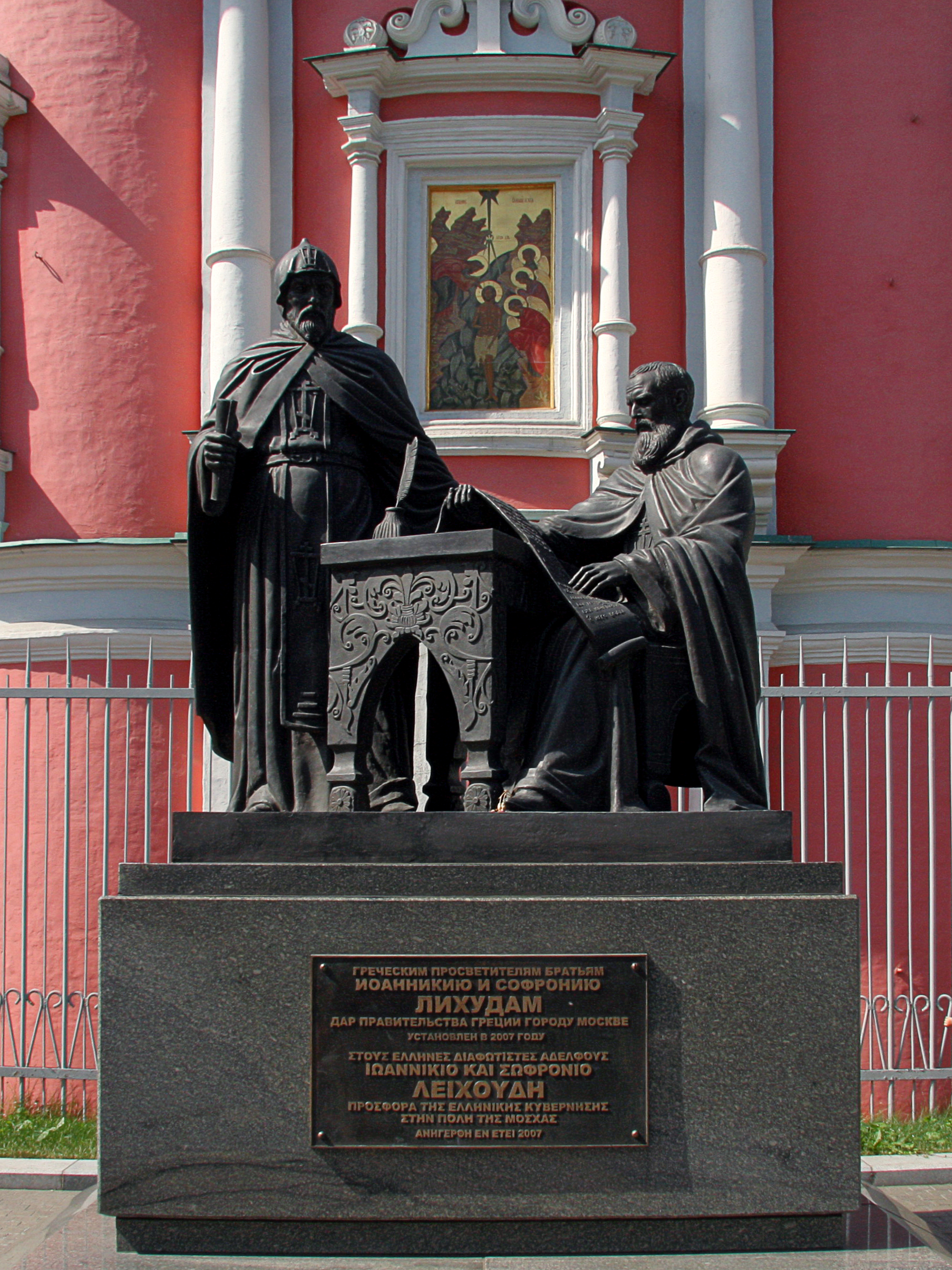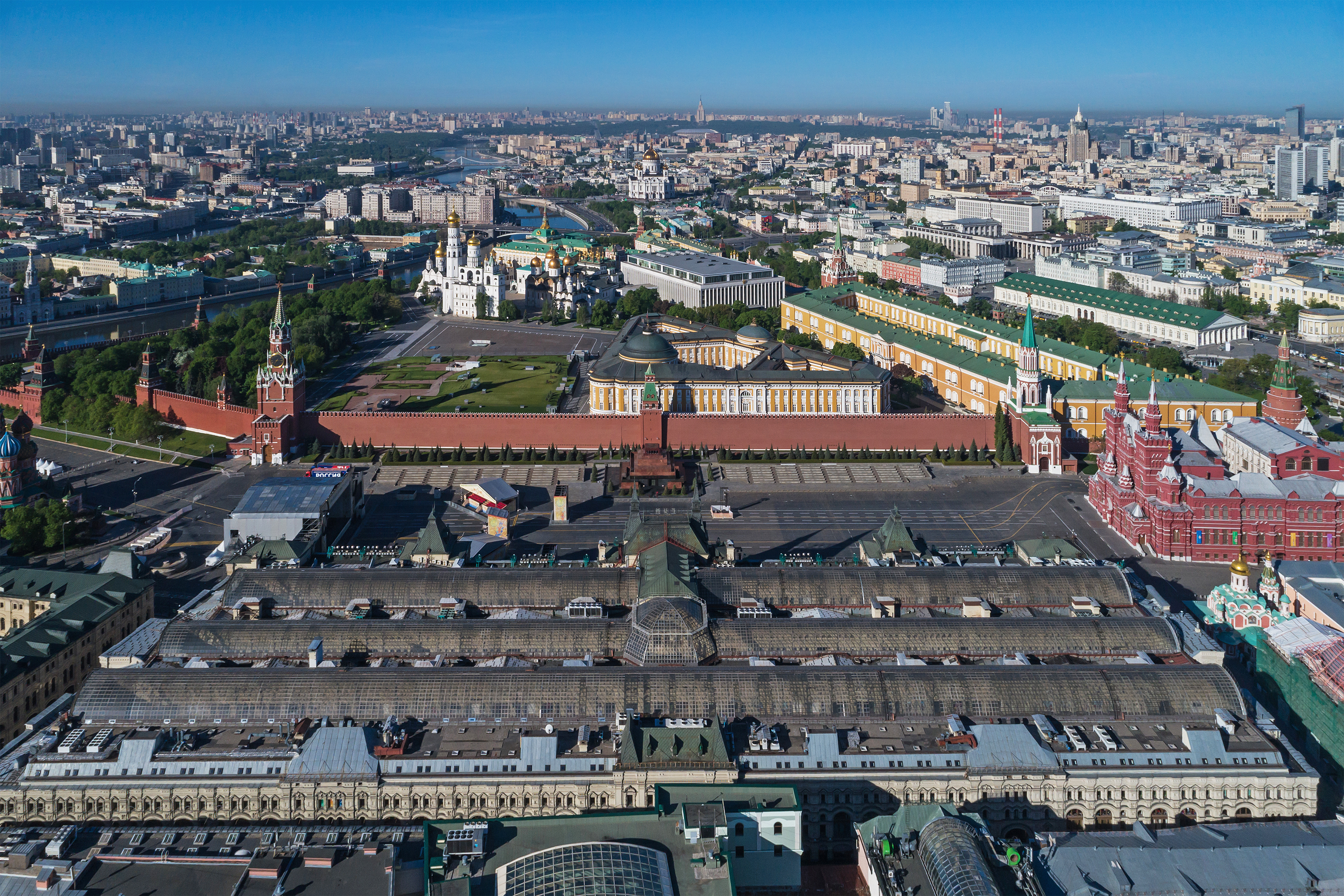|
Kitay-Gorod
Kitay-gorod (, ), also referred to as the Great Possad () in the 16th and 17th centuries, is a cultural and historical area within the central part of Moscow in Russia, defined by the remnants of now almost entirely razed fortifications, narrow streets and very densely built cityscape. It is separated from the Kremlin by the Red Square. Kitay-gorod does not constitute a district (''raion''), as there are no resident voters, thus, municipal elections are not possible. Rather, the territory has been part of Tverskoy District, and the Central Administrative Okrug authorities have managed the area directly since 2003. Destruction during the Soviet era All 10 chapels, 7 out of 18 parish churches, the Cathedral of the Nikolo-Greek Monastery, and two monastery bell towers were demolished in Kitay-gorod in the 1920s and 1930s by the Soviet government. After the destruction of the ancient wall with fortress towers, Kitay-gorod lost its borders and outlines. And in the mid-30s, with the ... [...More Info...] [...Related Items...] OR: [Wikipedia] [Google] [Baidu] |
Slavyanskaya Square
Slavyanskaya Square () is a square in central Moscow, renamed in 1924–1990 as northern side of Nogina Square (Площадь Ногина); the southern side of Soviet-era Nogina Square reverted to its old name Varvarka Gates Square (Площадь Варварских Ворот). These two square separates central Kitai-gorod from eastward Tagansky District. They connect to Varvarka Street (west), Solyanka Street (east), Kitaigorodsky Lane (south), Staraya Square and Lubyansky Lane (north), completing the half-circle of Central Squares of Moscow around Moscow Kremlin and Kitai-gorod. Disambiguation Slavyanskaya Square and southbound Varvarka Gates Square form a contiguous city square, but are officially different locations, a fact that may confuse even Muscovites. To add to this confusion, Staraya Square is not a square per se but a city street (closed to regular traffic) that discharges into Varvarka Gates Square. In the past, Staraya (Old) and Novaya (New) Squares ... [...More Info...] [...Related Items...] OR: [Wikipedia] [Google] [Baidu] |
Nikolskaya Street
Nikolskaya Street () is a pedestrian street in the Kitay-Gorod of Moscow. It connects Red Square and Lubyanka Square. In 1935, it was renamed from ''Nikolskaya Street'' to ''Street of the 25th of October'' before its original name was restored in 1990. The north side of the street is lined with historic buildings, such as the Kazan Cathedral, the Old Mint, Monastery of the Holy Saviour, Greek Monastery of St. Nicholas (from which this street takes its name), and the former Holy Synod Printing Offices, Russia's first publishing house. The south side contains the GUM and the Dormition Church, an example of the Naryshkin Baroque underwritten by the Saltykov boyar family in 1691. Before Stalin's reconstruction of downtown Moscow, the street led to the Vladimir Gates of the Kitay-Gorod wall (1534-38) which used to dominate the Lubyanka Square. Another Naryshkin Baroque church, dating from 1694, adjoined the gate, as did the more recent chapel of St. Pantaleon with a lar ... [...More Info...] [...Related Items...] OR: [Wikipedia] [Google] [Baidu] |
Zaikonospassky Monastery
The Monastery of the Holy Mandylion or Zaikonospassky Monastery () is an Russian Orthodox Church, Orthodox monastery on the Nikolskaya Street in Kitai-gorod, Moscow, just one block away from the Moscow Kremlin, Kremlin. It was founded in 1600 by Boris Godunov.''Заиконоспасский монастырь, Спас на "Священной улице", Orthodox site "Pravoslavie", August 2008, in Russian.'' At first called "Saviour the Old", the monastery gradually acquired its present quaint name which alludes to its location and means "the Saviour behind the icon shops". In the late 17th century, the monastery's learned administrators such as Symeon of Polotsk and Sylvester Medvedev had it transformed into a hotbed of Age of Enlightenment, enlightenment. Between 1687 and 1814, it was home to the Slavic Greek Latin Academy, Russia's first high school, secondary education establishment. There is a memorial Commemorative plaque, plaque in honor of its most famous student, Mik ... [...More Info...] [...Related Items...] OR: [Wikipedia] [Google] [Baidu] |
Slavic Greek Latin Academy
The Slavic Greek Latin Academy () was the first higher education establishment in Moscow. History Beginning The academy's establishment may be viewed as a result of the incorporation of the Left-Bank Ukraine into Muscovy after the Treaty of Pereyaslav. Under Fyodor Rtishchev's auspices, Epiphanius Slavinetsky and other learned monks moved from Kiev to Moscow and brought a taste for learning there. The Ukrainian and Polish influence was paramount at the court of Tsar Feodor III. In 1682, he signed the academy's charter ('), which had been elaborated by Sylvester Medvedev. The academy was organized in 1685-1687 under the guidance of two Greek brothers Joannicus and Sophronius Likhud on the premises of the Zaikonospassky Monastery with over 70 students. The academy was placed under the care of the Patriarch Prikaz. The curriculum was divided into levels ("schools"), including Slavonic and Greek writing, seven liberal arts (septem artes liberales), and theology. The academy itse ... [...More Info...] [...Related Items...] OR: [Wikipedia] [Google] [Baidu] |
Red Square
Red Square ( rus, Красная площадь, Krasnaya ploshchad', p=ˈkrasnəjə ˈploɕːɪtʲ) is one of the oldest and largest town square, squares in Moscow, Russia. It is located in Moscow's historic centre, along the eastern walls of the Moscow Kremlin, Kremlin. It is the city's most prominent landmark, with famous buildings such as Saint Basil's Cathedral, Lenin's Mausoleum and the GUM (department store), GUM department store. It has been a UNESCO World Heritage Site since 1990. Red Square has been the scene of executions, demonstrations, riots, parades, and speeches. Almost 73,000 square metres (800,000 square feet), it lies directly east of the Kremlin and north of the Moskva River. A moat that separated the square from the Kremlin was paved over in 1812. Location Red Square has an almost rectangular shape and is 70 meters wide and 330 meters long. It extends lengthways from northwest to southeast along part of the wall of the Kremlin that forms its boundary on ... [...More Info...] [...Related Items...] OR: [Wikipedia] [Google] [Baidu] |
GUM (department Store)
GUM () is a shopping center in Moscow, Russia. It was also the main department store in many cities of the former Soviet Union; similarly named stores operated in some Soviet republics and in post-Soviet states. The most famous GUM is the large store facing Red Square in the Kitai-gorod area – itself traditionally a mall of Moscow. Originally, and today again, the building functions as a shopping mall. During most of the Soviet period it was essentially a department store as there was one vendor: the Soviet State. Before the 1920s the location was known as the Upper Trading Rows (). As of 2021, GUM carries over 100 different brands, and has cafes and restaurants inside the mall. Moscow GUM Design and structure With the façade extending for along the eastern side of Red Square, the Upper Trading Rows were built between 1890 and 1893 by Alexander Pomerantsev (responsible for architecture) and Vladimir Shukhov (responsible for engineering). The trapezoidal building features ... [...More Info...] [...Related Items...] OR: [Wikipedia] [Google] [Baidu] |
Kitai-gorod Wall
Kitay-gorod (, ), also referred to as the Great Possad () in the 16th and 17th centuries, is a cultural and historical area within the central part of Moscow in Russia, defined by the remnants of now almost entirely razed fortifications, narrow streets and very densely built cityscape. It is separated from the Kremlin by the Red Square. Kitay-gorod does not constitute a district (''raion''), as there are no resident voters, thus, municipal elections are not possible. Rather, the territory has been part of Tverskoy District, and the Central Administrative Okrug authorities have managed the area directly since 2003. Destruction during the Soviet era All 10 chapels, 7 out of 18 parish churches, the Cathedral of the Nikolo-Greek Monastery, and two monastery bell towers were demolished in Kitay-gorod in the 1920s and 1930s by the Soviet government. After the destruction of the ancient wall with fortress towers, Kitay-gorod lost its borders and outlines. And in the mid-30s, with the ... [...More Info...] [...Related Items...] OR: [Wikipedia] [Google] [Baidu] |
Theatre Square (Moscow)
Theatre Square or Teatralnaya Square (, ''Teatralnaya ploshchad''), known as Sverdlov Square between 1919 and 1991, is a city square in the Tverskoy District of central Moscow, Russia. It is at the junction of Kuznetsky Bridge Street, Petrovka Street, and Theatre Drive (north-west of the latter; the square south-east of Theatre Drive is the separate Revolution Square). The square is named after the three theatres located on it: the Bolshoi Theatre, Maly Theatre, and Russian Academic Youth Theatre. The square is served by the Moscow metro at the Teatralnaya station on the Zamoskvoretskaya Line; Okhotny Ryad station on the Sokolnicheskaya Line; and Ploshchad Revolyutsii station on the Arbatsko-Pokrovskaya Line. History The square emerged after the 1812 Fire of Moscow and conversion of the Neglinnaya River into an underground channel. The river still flows diagonally under the square's park. It was designed in a symmetrical Neoclassical style by Joseph Bove in the 1820s, ... [...More Info...] [...Related Items...] OR: [Wikipedia] [Google] [Baidu] |
Church Of Cosmas And Damian, Moscow
The Church of Saints Cosmas and Damian in Old Panei (), is a Russian Orthodox church dedicated to the twin Saints Cosmas and Damian, Christian martyrs of the 4th century. It is located in the Kitay-gorod, in Moscow, Russia. In the 16th-17th century. Since 1508 it was a location of the Polish diplomatic mission in Russia, since that time this place called Pany or Stary Pany. File:Kosma Damian Kitay gorod2.JPG, St Cosmas and St Damian Church. File:Kosma Damian Kitay gorod3.JPG, St Cosmas and St Damian Church. File:Kosma Damian Kitay gorod4.JPG, St Cosmas and St Damian Church. See also *Saints Cosmas and Damian References * Palamarchuk, Petr. ''Moscow in borders of Garden ring''. Moscow, 2004, ( (т.2))() External links St Cosmas And St Damian Churchs on ''pravoslavie.ru''St Cosmas And St Damian Church in Old Panei on ''hramy.ru''St Cosmas And St Damian Church in Old Panei {{DEFAULTSORT:Saint Cosmas and Saintt Damian Church, Moscow Cosmas Cosmas Cosmas or Kosmas is ... [...More Info...] [...Related Items...] OR: [Wikipedia] [Google] [Baidu] |
Church Of The Trinity In Nikitniki
Church may refer to: Religion * Church (building), a place/building for Christian religious activities and praying * Church (congregation), a local congregation of a Christian denomination * Church service, a formalized period of Christian communal worship * Christian denomination, a Christian organization with distinct doctrine and practice * Christian Church, either the collective body of all Christian believers, or early Christianity Places United Kingdom * Church, a former electoral ward of Kensington and Chelsea London Borough Council that existed from 1964 to 2002 * Church (Liverpool ward), a Liverpool City Council ward * Church (Reading ward), a Reading Borough Council ward * Church (Sefton ward), a Metropolitan Borough of Sefton ward * Church, Lancashire, England United States * Church, Iowa, an unincorporated community * Church Lake, a lake in Minnesota * Church, Michigan, ghost town Arts, entertainment, and media * '' Church magazine'', a pastoral theology magazin ... [...More Info...] [...Related Items...] OR: [Wikipedia] [Google] [Baidu] |
Russian Revival Architecture
The Russian Revival style comprises a number of different movements within Russian architecture that arose in the second quarter of the 19th century and was an eclectic melding of Byzantine architecture, Byzantine elements (Neo-Byzantine architecture in the Russian Empire) and Peter I of Russia, pre-Petrine (Architecture of Kievan Rus', Old Russian) architecture. Russian Revival architecture arose within a framework of renewed interest in national architectures which occurred in Europe during the 19th century, and it is an interpretation and stylization of the Russian architectural heritage. Sometimes, Russian Revival architecture is often erroneously called Russian or Old-Russian architecture, but the majority of Revival architects did not directly reproduce the old architectural tradition. Being instead a skilful stylization, the Russian Revival style was consecutively combined with other international styles, from the architectural National Romantic style, romanticism of first ... [...More Info...] [...Related Items...] OR: [Wikipedia] [Google] [Baidu] |





